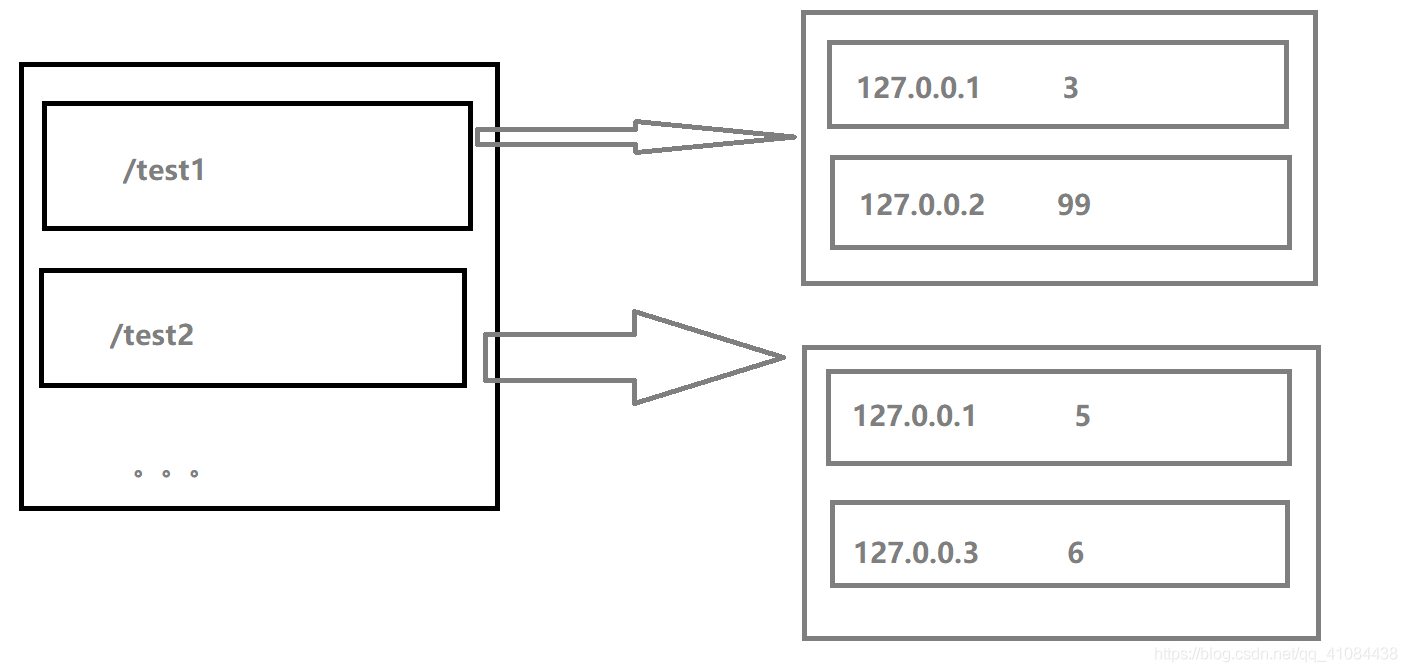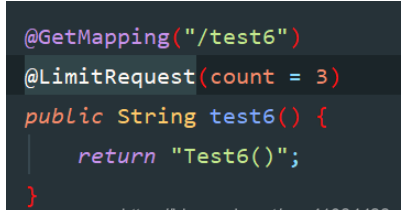这篇文章主要介绍“SpringBoot如何在一定时间内限制接口请求次数”,在日常操作中,相信很多人在SpringBoot如何在一定时间内限制接口请求次数问题上存在疑惑,小编查阅了各式资料,整理出简单好用的操作方法,希望对大家解答”SpringBoot如何在一定时间内限制接口请求次数”的疑惑有所帮助!接下来,请跟着小编一起来学习吧!
需要用到的知识:注解、AOP、ExpiringMap(带有有效期的映射)
我们可以自定义注解,把注解添加到我们的接口上。定义一个切面,执行方法前去ExpiringMap查询该IP在规定时间内请求了多少次,如超过次数则直接返回请求失败。
需要用到的依赖
<!-- AOP依赖 --><dependency> <groupId>org.springframework.boot</groupId> <artifactId>spring-boot-starter-aop</artifactId> <version>2.1.5.RELEASE</version></dependency><!-- Map依赖 --><dependency> <groupId>net.jodah</groupId> <artifactId>expiringmap</artifactId> <version>0.5.8</version></dependency>自定义注解@LimitRequest
@Documented@Target(ElementType.METHOD) // 说明该注解只能放在方法上面@Retention(RetentionPolicy.RUNTIME)public @interface LimitRequest { long time() default 6000; // 限制时间 单位:毫秒 int count() default 1; // 允许请求的次数}自定义AOP
@Aspect@Componentpublic class LimitRequestAspect { private static ConcurrentHashMap<String, ExpiringMap<String, Integer>> book = new ConcurrentHashMap<>(); // 定义切点 // 让所有有@LimitRequest注解的方法都执行切面方法 @Pointcut("@annotation(limitRequest)") public void excudeService(LimitRequest limitRequest) { } @Around("excudeService(limitRequest)") public Object doAround(ProceedingJoinPoint pjp, LimitRequest limitRequest) throws Throwable { // 获得request对象 RequestAttributes ra = RequestContextHolder.getRequestAttributes(); ServletRequestAttributes sra = (ServletRequestAttributes) ra; HttpServletRequest request = sra.getRequest(); // 获取Map对象, 如果没有则返回默认值 // 第一个参数是key, 第二个参数是默认值 ExpiringMap<String, Integer> uc = book.getOrDefault(request.getRequestURI(), ExpiringMap.builder().variableExpiration().build()); Integer uCount = uc.getOrDefault(request.getRemoteAddr(), 0); if (uCount >= limitRequest.count()) { // 超过次数,不执行目标方法 return "接口请求超过次数"; } else if (uCount == 0){ // 第一次请求时,设置有效时间// // ACCESSED,// // CREATED; uc.put(request.getRemoteAddr(), uCount + 1, ExpirationPolicy.CREATED, limitRequest.time(), TimeUnit.MILLISECONDS); } else { // 未超过次数, 记录加一 uc.put(request.getRemoteAddr(), uCount + 1); } book.put(request.getRequestURI(), uc); // result的值就是被拦截方法的返回值 Object result = pjp.proceed(); return result; } }第一个静态Map是多线程安全的Map(ConcurrentHashMap),它的key是接口对于的url,它的value是一个多线程安全且键值对是有有效期的Map(ExpiringMap)。
ExpiringMap的key是请求的ip地址,value是已经请求的次数。
ExpiringMap更多的使用方法可以参考:https://github.com/jhalterman/expiringmap

最后在方法上面加上@LimitRequest就行了

到此,关于“SpringBoot如何在一定时间内限制接口请求次数”的学习就结束了,希望能够解决大家的疑惑。理论与实践的搭配能更好的帮助大家学习,快去试试吧!若想继续学习更多相关知识,请继续关注编程网网站,小编会继续努力为大家带来更多实用的文章!





